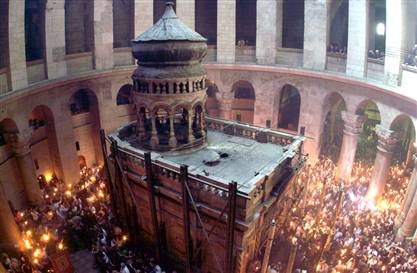
The Babylonian Talmud became, by a considerable distance, the more important of the two works, partly because Palestinian Jewry was steadily on the wane while the Jews of Babylon were relatively well organized and prosperous. “It became,” as Israeli historian Shmuel Safrai observes,
the basic—and in many places almost the exclusive—asset of Jewish tradition, the foundation of all Jewish thought and aspirations and the guide for the daily life of the Jew. . . . In almost every period and community until the modern age, the Talmud was the main object of Jewish study and education; all the external conditions and events of life seemed to be but passing incidents, and the only true, permanent reality was that of the Talmud.[1]
In 313 A.D., however, the Emperor Constantine officially recognized Christianity, and within a remarkably short time the new religion had become the official faith of the empire. The Jews now faced a twofold threat. Besides the paganism they had opposed for centuries, they now had to deal with their far more zealous and far more dangerous religious cousins, the self-proclaimed disciples of Jesus of Nazareth. Christianity was considerably less tolerant than paganism had been; unlike pagans, the monotheistic Christians couldn’t accept the legitimacy and truth of other, contradictory faiths. By at least the end of the fourth century, the continued existence of this obstinate people, the Jews, had become an irritation that pious Christians simply couldn’t overlook. Jews were seen, as the Emperor Constantius put it, as nothing but a “pernicious” or “despicable sect,” meeting not so much for worship as to carry out what he termed “sacrilegious assemblies.” “The Church,” writes Shmuel Safrai, “consistently fostered hatred and contempt for all that was Jewish.”[2] As bigoted preachers constantly reminded their Christian neighbors, the Jews were the “murderers of Christ.” In Palestine, entire Jewish villages—the majority of the province was still held by Jewish landowners until the beginning of the century—were burned to the ground by devout followers of Jesus. These Christians reasoned that—since they were the new Israel, having replaced the old Israel that had forfeited its blessings and its covenant through its rejection of the Messiah—the Holy Land was theirs. Besides, didn’t Palestine contain the site of the Crucifixion of Christ and his burial place, the Holy Sepulchre? (That Palestine also included sites holy in Jewish history was not of great importance to the new masters of the empire. Among other things, Christian government officials seem to have banned Jewish pilgrimages to Jerusalem.)
[1] Shmuel Safrai, in Ben-Sasson, A History of the Jewish People, 379.
[2] Shmuel Safrai, in Ben-Sasson, A History of the Jewish People, 349. Constantius’s language—which, incidentally, is not unlike the language of some modern anti-Mormons—is cited by Safrai on p. 350.












